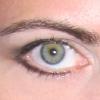I am looking for your favorite lists of biomarkers that are a clinical grade or evidence-based or will be within 5 years.

Biomarkers!
#1
Posted 10 September 2018 - 10:39 PM
#2
Posted 12 September 2018 - 03:59 PM
I can't believe no one has responded to the great Liz Parrish, assuming that is you.
I'm not as educated on these matters as some of the other people here. But I think the consensus would be to use Horvath or Levine's new epigenetic clock. They are the closest we have to some measure that can accurately predict mortality. The interface between epigenetics and telomeres seems to be a very promising area. We already know that restoring youthful cellular epigenetics with OSKM also restores telomere length. So it would be great to know if it works the same way in reverse, namely restoring telomere length will also restore a youthful epigenetic state.
#3
Posted 12 September 2018 - 06:32 PM
Personally, what I would do is use 4F on cells in a test tube, take methylation measurements, and measure the percent differentiated from the immortalized phenotype. Or we could use small samples of cord blood and from people at various ages where the oldest cells from centenarians or people around the median life expectancy would be used for comparison. It wouldn't initially be aligned with any particular age, but there would be a weighted difference between the young and old. That data will be of the most use over time as we work out the details. I have to wonder if the rest aren't fiat or will do well enough to get us to perfect youth and may wind up creating a bias for whatever interventions become available which will actually limit development if it gets people thinking within the 'box' of the metric. I'm not sure how the rest work, or perhaps they are using a similar method and are attempting to put them on a scale?
#4
Posted 13 September 2018 - 04:05 AM
your skin and overall physical appearance look very youthful in recent FB photos. As if the results of telomerase gene therapy are now visible. Do you agree, or am I having confirmation bias?
Edited by marcobjj, 13 September 2018 - 04:06 AM.
#5
Posted 13 September 2018 - 07:39 AM
Yes I would second marcobjj's question Liz - initially it looked as if the telomerase/follistatin treatment's effects, although measureable, were not substantial enough for a visible reduction in age. That now no longer appears to be the case, which is unexpected - could it be that the beneficial effects of treatment have taken a long time to filter through?
We definitely need better biomarkers to find out if a treatment such as yours has actually worked (other than eyeballing pictures on FB of course!) I still think telomere measurements are valid - but there is clearly an issue with the flux in results and the fact we are only looking at leukocyte telomere length. I would suggest a Life Length telomere measurement - but ideally we also need (like Horvath has done) measurements for a range of tissues. To build up a useable database you'd probably need to access all the tissue banks (again like Horvath has done), otherwise when you made your measurement you'd have no baseline.
Edited by QuestforLife, 13 September 2018 - 07:40 AM.
#6
Posted 15 September 2018 - 10:47 AM
Here is what we are doing: https://www.longecit...gingbiomarkers/
I hope we will be able to continue this into the future, as more (and better) tests become available.
#7
Posted 22 September 2018 - 12:10 AM
#8
Posted 22 September 2018 - 08:24 AM
She looks younger compared to 3 years ago. Make up and healthy weight are constants (ie she didn't start doing it between 2015 and now). So the variable it's either telomere extension, or as I mentioned, my confirmation bias. It's a linear first degree equation, try harder my friend.
#9
Posted 22 September 2018 - 01:04 PM
Biomarkers anyone?
#10
Posted 23 September 2018 - 12:39 AM
What about all the people on this site doing telomere extension? Do they look younger? I've read some of that thread and seen people get their telomere length measured and see increases. Are they reverse aging in appearance?She looks younger compared to 3 years ago. Make up and healthy weight are constants (ie she didn't start doing it between 2015 and now). So the variable it's either telomere extension, or as I mentioned, my confirmation bias. It's a linear first degree equation, try harder my friend.
For starters much of the process of aging and looking older lies in the extracellular matrix of which telomere extension does nothing because of the composition of the ECM. Another part of it is the loss of subq fat. You're free to believe in the Easter bunny if you want and you're free to believe Liz Parrish's ECM reverse ag
ed and she gained lost subq fat... Her cells rid themselves of glycation and she's biologically 32 again. But of course she didn't cherry pick her best pics to put online. After all that is just ridiculous. She still looks age appropriate for someone who lives stress free and takes care of their looks.
Lets see a progression of pics in constant lighting with no make up from day 0 to today. Nope. Will never see that because that would not do Bioviva much good to show she is still aging like the rest of us mortals. The only scie tific pic I have seen showed a slight reduction of fat from within some muscle mass. But that wasn't due to telomere but the other gene therapy she had done.
Its been a few years into this experiment and there should be more data than what has been released.
Edited by Rocket, 23 September 2018 - 12:49 AM.
#11
Posted 23 September 2018 - 02:04 AM
While I tend to agree that telomere extension won't make you much younger, though will perhaps give your cells a higher replicative capacity, I tend to think that it makes other regimens more effective. The MYO KO gene therapy, by way of improving fat metabolism might do some good for subq (brown) fat, and she could start stacking those GTs with deprenyl to further rejuvenate her subq fat, and consume more ECM remodelers in her diet or as supplements. Senolytics and p53 activation tend to create good opportunities to remodel the ECM.
Perhaps what we could do is get Liz to start enabling ECM remodelling and maybe take some supplements for the Brown fat... maybe there are better options than deprenyl, she's a musician and likely won't like having her adrenaline cut off for two weeks at a time...
Anyways, why not get some LongeCity volunteers to be NON GMO controls? We (LongeCity and Liz) take the ECM remodelling stack and Brown Adipose Tissue regeneration stack and see how much better she performs. In my experience, and I have no clinicals to back this up or anything, but I took stack aimed at virilizing my immune system to recognize new cellular abnormalities and it initially made my skin look older and more stressed, surprising yes, but thinking about it, it would be expected. Immediately after the immune system would remove a handful of cells, those surrounding them would be stretched thin to make up the space and those same cells are probably a little more damaged than the rest. Enter an aggressive course of senolytics, p53 activation, and telomere extension, and the more aged look went away. I'm not sure how much younger I look now if at all, but I've seen improvements. I'd also wonder whether her results are more permanent than ours. I've stopped taking the stuff that was making my subQ fat and muscle look better and some of the benefits have disappeared, but they do seem to reinforce the performance of the more permanent regimens.
Liz: Any plans to work with SENS on the 7-KC digesting enzyme GT? Or perhaps there are others in their pipe that you're looking to add to yours?
Edited by YOLF, 23 September 2018 - 02:07 AM.
#12
Posted 23 September 2018 - 05:03 AM
let's not hijack this thread and turn it into yet another Telomere vs SENS thing. This is about Liz her request for aging biomarkers.
Edited by marcobjj, 23 September 2018 - 05:10 AM.
#13
Posted 23 September 2018 - 06:08 AM
I don't think there's a telomere vs SENS argument... telos are part of SENS iirc and have a definite place in the landscape of the cure for aging.
#14
Posted 23 September 2018 - 01:42 PM
Here is what we are doing: https://www.longecit...gingbiomarkers/
I hope we will be able to continue this into the future, as more (and better) tests become available.
This link obviously doesn't open for non-members. Would you be generous and post the bio-markers you're using?
#15
Posted 25 September 2018 - 03:57 PM
What about all the people on this site doing telomere extension? Do they look younger? I've read some of that thread and seen people get their telomere length measured and see increases. Are they reverse aging in appearance?
For starters much of the process of aging and looking older lies in the extracellular matrix of which telomere extension does nothing because of the composition of the ECM. Another part of it is the loss of subq fat. You're free to believe in the Easter bunny if you want and you're free to believe Liz Parrish's ECM reverse ag
ed and she gained lost subq fat... Her cells rid themselves of glycation and she's biologically 32 again. But of course she didn't cherry pick her best pics to put online. After all that is just ridiculous. She still looks age appropriate for someone who lives stress free and takes care of their looks.
Lets see a progression of pics in constant lighting with no make up from day 0 to today. Nope. Will never see that because that would not do Bioviva much good to show she is still aging like the rest of us mortals. The only scie tific pic I have seen showed a slight reduction of fat from within some muscle mass. But that wasn't due to telomere but the other gene therapy she had done.
Its been a few years into this experiment and there should be more data than what has been released.
And why do you think ceĺls with longer telomeres wouldn't remodel the ECM? This is precisely what they would do as collagen and elastin production, breakdown and replacement would be restored to their (greater) youthful rate.
As for biomarkers, how about microbial load in the bloodstream?
#16
Posted 25 September 2018 - 04:06 PM
And why do you think ceĺls with longer telomeres wouldn't remodel the ECM? This is precisely what they would do as collagen and elastin production, breakdown and replacement would be restored to their (greater) youthful rate.
As for biomarkers, how about microbial load in the bloodstream?
I think that would have more to do with gene expression and health of cellular machinery.
#17
Posted 25 September 2018 - 06:41 PM
I think that would have more to do with gene expression and health of cellular machinery.
Which is related to Telomere length. Many experiments have shown turnover of inter and intra cellular proteins declines with cell turnover but can be restored by restoring telomere length. Old cells slow down is a basic but succinct way of explaining how this process works. And it is regulated by telomere length.
#18
Posted 25 September 2018 - 07:27 PM
Which is related to Telomere length. Many experiments have shown turnover of inter and intra cellular proteins declines with cell turnover but can be restored by restoring telomere length. Old cells slow down is a basic but succinct way of explaining how this process works. And it is regulated by telomere length.
Well in that case, I suppose we will want to see some tissue biomarkers. Most things rely on WBC telo lengths and perhaps a spread of telomere lengths from multiple tissues to see what should be expected to start rejuvenating. However, while telo. ext. may cause ECM remodeling, does it remove dysfunctional cells? Surely it will remove some if the immune system is healthier and the innate immune system (ECM remodelling and healthy tissue strength) will force out other cells and/or starve them out, though they may also regenerate and sustain dysfunctional cells also. The gradient will change, but I don't think it will be as sharp as when we were young. So other methods will be necessary to see total ECM restructuring that makes one look fully youthful again.
Liz, do you practice CR (Calorie Restriction)? CR will likely help, though you might have unique calorie needs from the MYO KO GT.
#19
Posted 25 September 2018 - 07:55 PM
I think Steve Horvath's epigenetic clock approach is probably the most meaningful, advanced approach we have seen.
#20
Posted 26 September 2018 - 08:20 AM
Well in that case, I suppose we will want to see some tissue biomarkers. Most things rely on WBC telo lengths and perhaps a spread of telomere lengths from multiple tissues to see what should be expected to start rejuvenating. However, while telo. ext. may cause ECM remodeling, does it remove dysfunctional cells? Surely it will remove some if the immune system is healthier and the innate immune system (ECM remodelling and healthy tissue strength) will force out other cells and/or starve them out, though they may also regenerate and sustain dysfunctional cells also. The gradient will change, but I don't think it will be as sharp as when we were young. So other methods will be necessary to see total ECM restructuring that makes one look fully youthful again.
Liz, do you practice CR (Calorie Restriction)? CR will likely help, though you might have unique calorie needs from the MYO KO GT.
I agree - we'd need tissue samples. Not something that's easy or pleasant to do, however. That's why I have previously suggested using tissue banks (like Horvath has done for his clock) to get a baseline for telomere lengths in various tissues as we age.
#21
Posted 26 September 2018 - 11:45 AM
Do you have a link to an explainer of some sort on tissue banks? Is this about growing tissue out of the body? I'd prefer regular, though not excessive, samples from the whole organism.
#22
Posted 26 September 2018 - 11:55 AM
Do you have a link to an explainer of some sort on tissue banks? Is this about growing tissue out of the body? I'd prefer regular, though not excessive, samples from the whole organism.
I'm just talking about tissue banks held by hospitals and previous studies and the like. Horvath used samples from all sorts of organs to verify his epigenetic methylation clock. The same could be done in proliferative tissues for a more accurate telomere clock.
#23
Posted 26 September 2018 - 01:48 PM
So you mean using them for benchmarkers not for predicting Liz's telo and methylation status from outside of the body? Cool!
Edited by YOLF, 26 September 2018 - 01:49 PM.
#24
Posted 26 September 2018 - 02:17 PM
So you mean using them for benchmarkers not for predicting Liz's telo and methylation status from outside of the body? Cool!
Exactly - Liz didn't have this done, but if we could establish a telomere benchmark against age and tissue type it would allow us to see how old Liz really is, if she gave the appropriate tissue sample.
#25
Posted 26 September 2018 - 04:03 PM
You can always use the general population sample, if any such studies exist, for bench marking. Obviously. it's not ideal since there is a great deal of variation. But if a therapy works very well, it should place in a top percentile for your age group.
I agree with those saying that telomere therapy has the potential to show phenotypically. The ECM should be affected by any number of therapies, including telomere, epigenetic and senolytic. We've all seen mouse studies in the last couple years where an aged mouse given one of these therapies, actually looks visibly younger. That means the ECM is being targeted in some way.
#26
Posted 26 September 2018 - 07:50 PM
Exactly - Liz didn't have this done, but if we could establish a telomere benchmark against age and tissue type it would allow us to see how old Liz really is, if she gave the appropriate tissue sample.
That's not a bad idea, but we can also compare these against the other measurements as well as establish a baseline for further testing should the telos of these cells continue elongate. We don't know what these are going to look like yet.
#27
Posted 27 September 2018 - 12:23 AM
You can always use the general population sample, if any such studies exist, for bench marking. Obviously. it's not ideal since there is a great deal of variation. But if a therapy works very well, it should place in a top percentile for your age group.
I agree with those saying that telomere therapy has the potential to show phenotypically. The ECM should be affected by any number of therapies, including telomere, epigenetic and senolytic. We've all seen mouse studies in the last couple years where an aged mouse given one of these therapies, actually looks visibly younger. That means the ECM is being targeted in some way.
No, you need to be more accurate. An artificially aged mouse... There is a huge difference.
#28
Posted 27 September 2018 - 08:31 AM
No, you need to be more accurate. An artificially aged mouse... There is a huge difference.
It isn't just artificially aged mice that can look younger with treatments - wild types do too in some studies. Generally this is an improvement with fur rather than skin as you'd expect for a furry animal!
But this is besides the point. The ECM should improve with increased fibroblast and protein turnover. This seems to have occurred with Liz, though it is hard to be sure.
I wonder if a telomerase therapy could be targeted specifically to the skin? This would mean less virus would need to be created. For some reason this part of gene therapy still seems to be very expensive. You'd think a small amount of virus could go on to infect the entire body, but I'm far from an expert on gene therapy. Maybe Liz can comment on this.
#29
Posted 27 September 2018 - 01:29 PM
The amount of virus isn't all that consequentia, it just has to be enough and you'll need this everywhere. Targeting it is likely to be very difficult or limited.
#30
Posted 30 November 2018 - 09:15 PM
https://apple.news/A...CR3qO5SeVyky7dg
November 30, 2018
Reminiscent of a scene from "The Social Network," the whiteboard in researcher and professor Morgan Levine's Yale Medical School office is covered in a series of letters and numbers. She clicks the red cap back onto the dry erase marker and steps back to admire her work.
In front of her, the equation stretches across multiple lines, taking up much of the surface. This algorithm represents a new way of thinking about age.
"In my lab, we work on a lot of different types of aging measures," Levine said. "One of the most recent ones is based on blood measures you get at your normal doctor's appointment. We basically take those and combine them using different algorithms to get what we call someone's phenotypic age or biological age."
Essentially, everyone has two ages: a chronological age, how old the calendar says you are, and a phenotypic or biological age, basically the age at which your body functions as it compares to average fitness or health levels.
"People of the same chronological age aren't all at the same risk for developing cardiovascular disease or cancer or even dying," Levine said. "What [the biological age] does is actually give us a better idea of where someone stands for their age."
"Chronological age isn't how old we really are. It's a superficial number," said professor David Sinclair, co-director of the Paul F. Glenn Center for the Biology of Aging at Harvard Medical School. "We all age biologically at different rates according to our genes, what we eat, how much we exercise and what environmental toxins we are exposed to. Biological age is what determines our health and ultimately our lifespan. Biological age is number of candles we really should be blowing out. In the future, with advances in our ability to control biological age, we may have even fewer candles on our cake than the previous one."
Levine and her team identified nine biomarkers taken in a simple blood test that seemed to be the most influential on lifespan. The biomarkers include blood sugar, kidney and liver measures, and immune and inflammatory measures.
Levine plugs those numbers into the computer, and the algorithm does the rest.
People with a biological age lower than their chronological age have a lower mortality risk, while those aging older from a biological standpoint have a higher mortality risk and are potentially more prone to developing the diseases associated with the higher age range.
But perhaps what's most important here — unlike results from genetic testing — is that these are measures that can be changed. Doctors can take this information and empower patients to make changes to lifestyle, diet, exercise and sleep habits, and hopefully take steps to lower the risk and improve their biological age.
"I think the most exciting thing about this research is that these things aren't set in stone," Levine said.
"We actually know a lot about how to change some of these markers. I think we are given the information much earlier in the process, hopefully before someone ever develops disease, and then they can really take steps to improve their health before its too late."
Levine, who has been fascinated with aging ever since she was a young girl, even entered her own numbers into the algorithm. She was surprised by the results.
"I always considered myself a very healthy person," she said. "I'm physically active; I eat what I consider to a fairly healthy diet. I did not find my results to be as good as I had hope they would be."
She now tries to get more sleep and changed her diet and exercise routine. "It was a wake-up call," she said.
Levine is working with a group to provide access to the algorithm online so that anyone can calculate their biological age, identify potential risks and take the steps to help their own health in the long run.
"No one wants to live an extremely long life when they are in very poor health and have a lot of chronic disease," Levine said.
By delaying the onset of diseases and cognitive and physical functioning problems, "people can still be engaged in society," she said. "I think that is the ideal we should be striving for."
Also tagged with one or more of these keywords: biomarkers, proteomics, dna, blood, rna, mri, telomeres, grip
2 user(s) are reading this topic
0 members, 2 guests, 0 anonymous users

























































